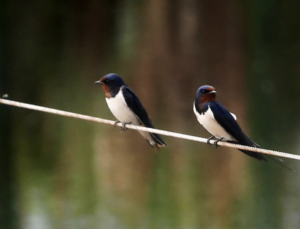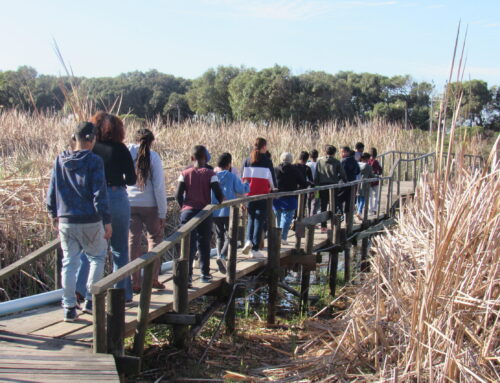World Migratory Bird Day highlights the need for the conservation of migratory birds and their habitats. This global initiative emphasises the threats faced by migratory birds, their ecological importance, and the necessity for international cooperation to protect them. This day is celebrated in May and October, aligning with the annual migrations between the northern and southern hemispheres.

Barn swallows (Hirundo rustica) perching. Photo: Jarred Vaughan
Bird migration, a natural phenomenon
Bird migration, a process that has fascinated people across cultures for centuries, involves the seasonal movement of birds between hemispheres. These journeys are driven by a combination of instinct, environmental cues, and survival strategies. During stopovers along their migration routes, as well as feeding their offspring, birds actively forage for insects in various habitats. The role of migratory birds in ecosystems is that they contribute to pollination, seed dispersal, nutrient cycling, and insect control.
2024 World Migratory Bird Day theme
This year’s theme is “Protect Insects, Protect Birds,” which highlights the relationship between insects and migratory birds. Insects are essential for providing the necessary energy and nutrients, particularly during migration and breeding seasons. The theme draws attention to the alarming decline in insect populations globally, which mirrors the decrease in bird populations that rely on them. It urges action to restore habitats, reduce pesticide use, and monitor both birds and insects to halt this decline and safeguard avian populations.
Migratory birds in South Africa
The Barn swallow (Hirundo rustica) is one of the widespread species of swallow in the world, with a range extending from the Arctic Circle in North America to southern South America, and throughout Eurasia and parts of Africa. These long-distance migrants have wintering grounds that cover much of the Southern Hemisphere, reaching as far south as central Argentina, our very own Cape Province of South Africa, and northern Australia.
Efforts from the Nature Care Fund team
The Muizenberg East Biodiversity Cluster, Kenilworth Racecourse, Milnerton Racecourse and Zoarvlei Wetlands conservation teams play an active role in World Migratory Bird Day by conducting regular bird counts across the various biodiversity sites, as well as analysing the trends of migratory bird species’ presence and absence. Additionally, our teams are raising awareness within the local communities, particularly those living around conservation areas. Importantly, they encourage the planting of indigenous flora, which is crucial in fostering a thriving insect population. This, in turn, ensures an abundant food source for the migratory birds, thereby promoting balance in the greater ecosystem.
Contribution to World Migratory Bird Day
You can get involved in World Migratory Bird Day by learning about migratory birds, or visiting open natural areas and nature reserves to observe birds in their natural habitats. Why not visit one of the many nature reserves in Cape Town that are home to an abundance of bird species. You could create bird-friendly spaces at home, by planting indigenous flora in your outdoor space.
Every small action counts. By appreciating and protecting migratory birds, you contribute to the health of our planet and its rich biodiversity.






